The Low Friction Contradiction (Low Friction or Fiction)
Submitted by Michel Champagne and collaborators on
By Michel Champagne and collaborators
‘’Reproduit avec la permission de l’Association internationale d’orthodontie, IJO 2007:2; Summer issue ’’, en tout petit à la fin.
Abstract: Low friction is on everyone’s lips, from companies to lecturers, some are just whispering and others are shouting the advantages of low friction self-ligating brackets. The low friction appliances get tremendous attention and publicity. Most major companies have a bracket that they describe as low friction. Many clinicians have switched or are considering the switch to these brackets. Most companies present their low friction line describing and promoting their bracket design. In our opinion low friction is not only a question of bracket design. Low friction must be looked at, promoted and used as a complete philosophy. To insure maximum results the low friction clinicians will have to choose and respect the philosophy of the system.Using only a so-called low friction bracket will not assure the clinician the performance of low friction mechanics. This article will try to expose a low friction philosophy which goes beyond the bracket design. We will describe a global approach to low friction philosophy using the Damon System as an example. We do not imply that the Damon System is the only system that can get excellent results but it is a system that has a good track record and that has been on the market for many years.
The Philosophy
A low friction system is based on the free flow between the wire and the bracket slot. To assure this free flow between the wire and the bracket binding should be kept to a minimum. To permit free flow the clinician will choose an initial wire of round shape with a very small diameter. This difference in size between the wire and the lumen of the bracket leaves an empty space that will minimize binding. A small round shape wire will also minimize binding at the entrance and exit of the bracket.1, 10 The partial engagement minimizes tipping of the teeth. The combination of small round wires and no binding exerts lower forces on the periodontal membrane of the teeth in the system. The vascular tissues in the periodontal membrane may be submitted to higher compression forces in some areas if the system expresses too much force as a result of binding.2 The vascular tissues of the periodontal membrane have an internal vascular pressure of 25 gm/cm.2 Any action compressing these tissues will crush them and reduce or anneal blood flow, stopping the venue in the area of nutrient cells including osteoblasts and osteoclasts.3 We have to introduce the “Biozone concept.” The Biozone is the area in the periodontal membrane where the vascular tissues bathe in collagen fibers, ideally in balance with the intra and extra vascular forces. If blood flow is blocked, the area goes into a hyalinization phase and tooth movement in the area is blocked for 48 to 72 hours.4 Necrosis and reorganization must occur for tooth movement to restart. We may call it a lag phase (Figure 1A).
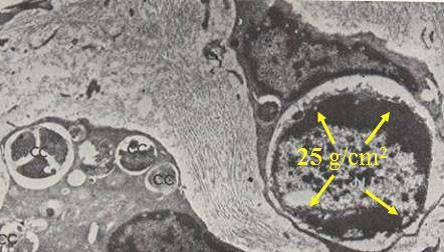
Figure 1A - Intravascular pressure.
Every time we change a wire and put in excessive forces, we induce forces that crush the vascular tissues in the periodontal ligament (PDL). Binding also charges the PDL in a similar manner, where the importance of avoiding as much binding as possible in the system designs. In a high friction system every time the extravascular pressure in the PDL exceeds 25gm/cm2 the Biozone is violated and tooth movement slows down. If tooth movement slows down, the treatment time increases (Figure 1B). Putting the Biozone concept in application means that even with a low friction bracket, if we almost fill the bracket slot with a big round initial wire or rectangular wire, even if the wire is very soft we will introduce friction into the system and tooth movement will slow down. The same principle applies if lumen is nearly filled with a very soft rectangular wire where torque is introduced and stress applied to the PDL (Figure 2). The philosophy of the low friction concept has to work in harmony with the Biozone concept.
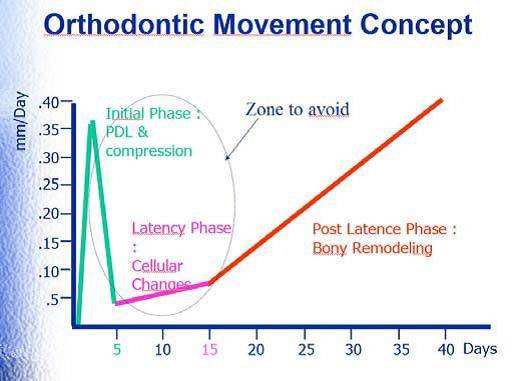
Figure 1B - Hyalinization time table.

Figure 2 - Binding and Stress in the PDL
The Bracket Design
Many companies have low friction brackets on the market but from most of them, a low friction SYSTEM is not available. Dr. Dwight Damon is not the first one to develop a low friction bracket, but to our knowledge he is the first one to put together a PHILOSOPHY and a SYSTEM that respects the Biozone concept. The market is full of low friction brackets (Damon, Delta, Speed, Carriere, Time, Opal, InOvation, etc). Some differences exist between all of these systems, either in the way they hold the wire, in their door mechanism or in their looks. For discussion purposes, we will eliminate all the brackets that call themselves low friction but hold the wire with a donut and concentrate on brackets with a metal door or metal clip mechanism, i.e. self-ligating brackets.
The metal door brackets have 3 kinds of door mechanisms: active, passive and passive-active. All the active door brackets have a clip design that keeps pressure on the wire, pushing and forcing the wire in the back part of the bracket slot. The passive door does not exert any active spring-like pressure on the wire even when the wire fills most of the slot. The passiveactive door is like an in-between, not exerting any pressure on the wire at the beginning but as the horizontal dimension of the wire becomes bigger some pressure will be exerted on the wire. This will happen sooner with a passive-active door system than with the passive door system. The principle behind the passiveactive door is to engage the wire earlier to correct the rotations and introduce torque. The side effect to this phase of treatment (correction of rotations) is friction as soon as the clip becomes active.5 We should think of passive door brackets as tubes like the molar tubes. This would be the best way to describe them (Figures 3A-3B).
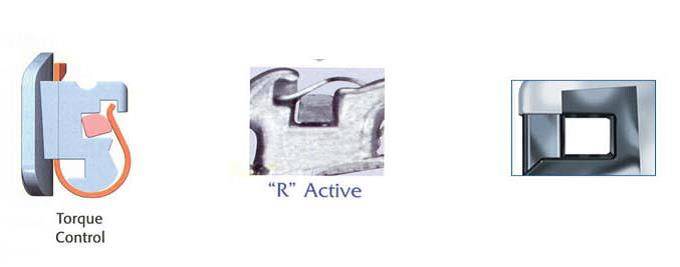
Figure 3A - Different door systems.
The Wires
When using a wire in any system, the clinician has to decide on an arch shape, metallurgy of the wire(s) and the sequence in which he is going to use the different wire sizes and metallurgies. Some expansionist clinicians prefer a broad arch shape and some traditionalists prefer to keep the initial arch shape as close as possible to the original arch shape of the patient. Many clinicians propose no more than 2 mm of expansion in the lower inter cuspid area. A study by McLauglin and Bennett shows the proportion of naturally occurring arch shapes in the untreated normal population.
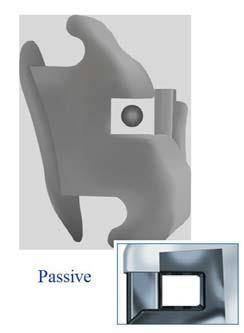
Figure 3B. Passive self ligation works like a tube.
The arch shape proposed by Dr. Damon is more a traditional one. In the Damon philosophy the lower cuspid area is protected from extreme expansion, a philosophy cohesive with many. Researchers claim that dental arches offer more developmental stability in the area distal to the cuspids and even more stability in the upper arch than in the lower arch.8 This does not mean that lingually inclined lower canines cannot be uprighted. In these cases where the lower cuspids have to be uprighted the inter-cuspid arch development will exceed 2 mm.
We urge you to take this simple test: take a lower model of one of your next crowded cases and draw what would be the perfect arch form for this particular case, using your own philosophy. Then, lay a Damon arch form over it and compare them. Many of us will find that the two arch forms match (Figure 4B). If they do not, some of the principles of your philosophy of treatment are not in harmony with the Damon philosophy. We mentioned arch shape as just one part of the equation; wire metallurgy should also be part of the discussion.
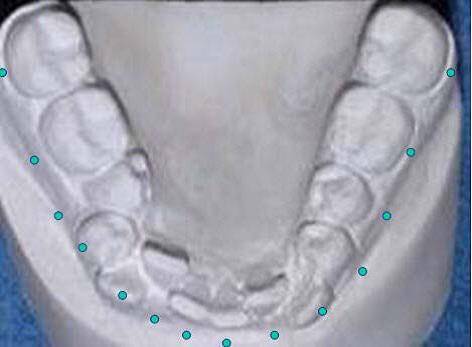
Figure 4A - Ideal treatment archform
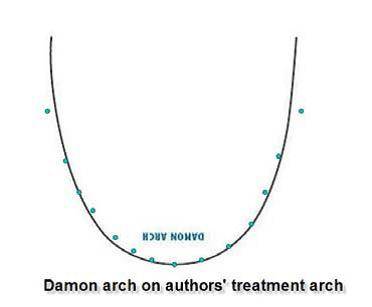
Figure 4B - Choosing the archwire shape
The ideal wire proposed for the Damon System in the first and second phases of treatment is a very low force patented archwire made of CuNiTi. The wires from this system have evolved enormously since the first series of Damon brackets and are an important part of the technique success. The wires have been made to respect the Biozone and also the NEUTRAL ZONE that we will discuss later. The wires are soft enough not to exceed the 25 gm/cm2 of intra capillary pressure within the PDL. At the same time all the CuNiTi wires used in this system must be soft enough not to exceed and override the buccal and labial musculature of the cheeks and lips. The respect of this objective and the achievement of this goal puts the teeth in a NEUTRAL ZONE where the muscles are balanced, not exerting more pressure from the inside or the outside

Figure 5 - The neutral zone
The third factor of the equation is the wire sequence. Users have to respect the progression of round to rectangular soft CuNiTi wires of different sizes to finally engage stainless steel wires in the Power Mechanics Phase of treatment. So we will initially suggest a very small CuNiTi wire 0.013 or 0.014 Damon shape and Damon force to start treatment. A standard arch wire sequence is listed in the Mechanics section. A very important factor to remember is to let the initial wires work for extended periods of time so that they can express themselves to the maximum of their potential. The new user of the Damon System must avoid incorporating old concepts of mechanics with this new system (tying down the archwires) Figure 6). The Damon System exerts so little friction with the use of the small round initial wires 0.013, 0.014 that stops on the archwires must be used to prevent archwire displacement to the point of impinging the soft tissue distal to the molars (Figure 7).

Figure 6 - Tied down archwire inducing friction.

Figure 7 - Archwire stops. (Reproduced with permission from Sybron Dental Ormco).
Such an issue is the cause of frequent emergency appointments. One advantage of low friction mechanics is to let the forces work for long periods of time allowing longer inter-appointment intervals.

Figure 8 - Shaping the lower SS arch with a wax bite.
The Mechanics
The Damon low friction philosophy and applied system of mechanics can be divided into 3 phases. Phase I, the INITIAL ALIGNMENT PHASE, is described as the round soft wire phase, where alignment and leveling take place with some limited amount of rotation correction. In this phase the wire is always round, always undersized and always of Damon force and shape. Depending on the severity of the crowding this phase may take between 3 to 6 months. With a high dental IQ patient, the inter appointment intervals may be 6 to 10 weeks.
Phase II, the HIGHTECH PHASE, described as the rectangular soft wire phase, will finish alignment, leveling and correct the rotations. The wires used in this phase will always be rectangular CuNiTi Damon force and shape. The wires will present an horizontal dimension of 0.025 to adequately correct the rotations (0.014 x 0.025, 0.016 x 0.025, 0.018 x 0.025).
Phase III, is the MAJOR MECHANICS PHASE, where elastics may be used to close spaces, correct the overjet and fully sit the bite in an ideal Class I occlusion. This phase uses 0.019 x 0.025 SS wire in the upper and 0.016x 0.025 SS wire in the lower arch. After Phase II and before using any SS wires in Phase III, the SS wires must be shaped to proper arch form, the arch form that Phase I and II have developed. A wax bite is taken at the end of the HIGH-TECH PHASE and the lower arch SS wire is shaped accordingly (Figure 8). The upper arch SS wire is then shaped 2-3 mm wider. The Biozone and Neutral zone were described earlier and the Phase I and II of the system will change the arch form to one in balance with the musculature. This is done using special low force wires, weak enough not to force the teeth outside the neutral corridor dictated by the surrounding muscles (Figure 5).

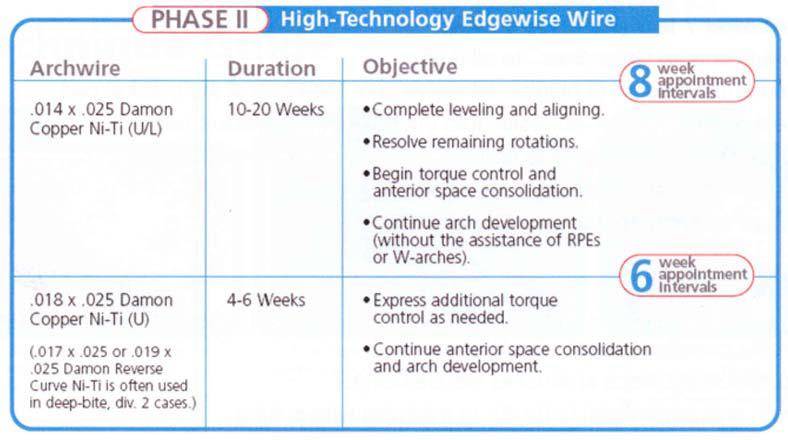
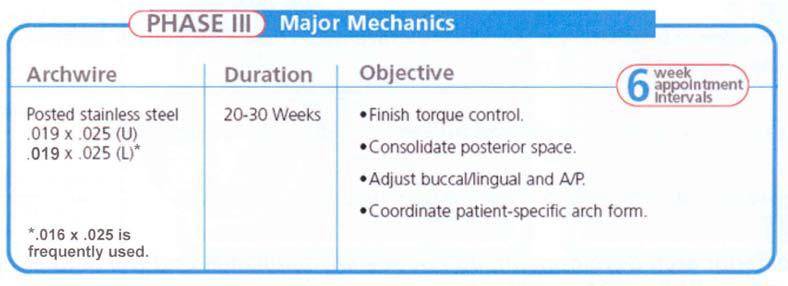

The clinician can be faced with different situations. In some cases, the crowding will have disappeared due to spontaneous bony reaction to the low forces resulting in arch development mostly distal to the cuspid area. In other cases, there still will be crowding. This crowding will have to be resolved by traditional means: air rotor stripping (ARS), extraction(s), dentoalveolar compensation, etc. One sure thing the system will do for you is to extend yourpossibilities of treatment without extraction even further. Study carefully the different phases of treatment and their average time in Table 1. Phase IV, the FINISHING PHASE, uses bends in the SS wires to properly detail the case as needed.
The Stability
We are all faced with the big question…stability. Will low friction improve stability? Really low friction brackets have nothing to do with stability. Low friction brackets, if used properly, can probably only shorten treatment by a few months. We are all in search of the ultimate goal, stability. The only way to plan for some degree of stability is by proper diagnosis and treatment planning. According more attention to causal factors and proper function is the key to this illusive goal that is stability. Will we get away with no retention? Certainly not if we want to keep close to perfect alignment. Will we maintain the patient in good health? The answer is probably yes if we treat the patient to normal function and proper muscle balance. Stability has nothing to do with bracket design; it has all to do with Phase 0 of your treatment. Phase 0 is diagnosis and treatment planning in a modern approach where the causal factors responsible for the problems are addressed and resolved. Remember that we cannot treat what we do not know and we cannot see what we do not know.
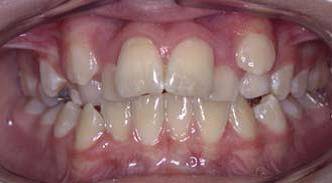 |
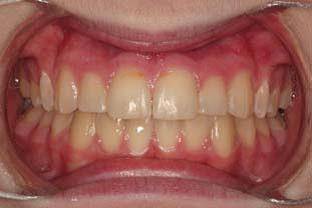 |
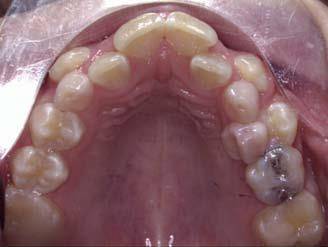 |
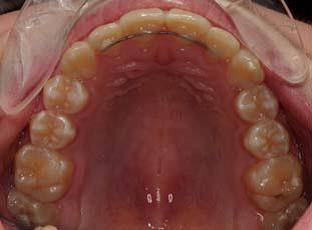 |
 |
 |
 |
 |
 |
 |
Case 1 shows pre and post-op pictures of a patient treated with Damon brackets.
Conclusion
Many clinicians get out of a low friction seminar with a bracket design in their mind and without any clue of the philosophy behind the low friction system. Some of us have already tried one bracket design. We have been working with the Damon System and followed the development of the philosophy behind the Damon System for the last 9 years. To our experience and knowledge, it is our opinion that the success claimed by the described system does not come from bracket design only. The total concept and philosophy has more to do with the success than the bracket. Low friction is not a panacea but low friction and low force is surely a philosophy that is here to stay.9 It is also our opinion that to match the success described by the literature you need more than a bracket, you need a total system that matches a logical philosophy. Low friction brackets used within a low force system have not yet gone through the Evidence-Based etiquette as we know it per se, but they seem very promising.